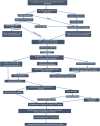Brachial plexus injury after shoulder dislocation: a literature review
- PMID: 29961154
- PMCID: PMC7186242
- DOI: 10.1007/s10143-018-1001-x
Brachial plexus injury after shoulder dislocation: a literature review
Abstract
Brachial plexus injuries are among the rarest but at the same time the most severe complications of shoulder dislocation. The symptoms range from transient weakening or tingling sensation of the upper limb to total permanent paralysis of the limb associated with chronic pain and disability. Conflicting opinions exist as to whether these injuries should be treated operatively and if so when surgery should be performed. In this review, available literature dedicated to neurological complications of shoulder dislocation has been analysed and management algorithm has been proposed. Neurological complications were found in 5.4-55% of all dislocations, with the two most commonly affected patient groups being elderly women sustaining dislocation as a result of a simple fall and young men after high-energy injuries, often multitrauma victims. Infraclavicular part of the brachial plexus was most often affected. Neurapraxia or axonotmesis predominated, and complete nerve disruption was observed in less than 3% of the patients. Shoulder dislocation caused injury to multiple nerves more often than mononeuropathies. The axillary nerve was most commonly affected, both as a single nerve and in combination with other nerves. Older patient age, higher energy of the initial trauma and longer period from dislocation to its reduction have been postulated as risk factors. Brachial plexus injury resolved spontaneously in the majority of the patients. Operative treatment was required in 13-18% of the patients in different studies. Patients with suspected neurological complications require systematic control. Surgery should be performed within 3-6 months from the injury when no signs of recovery are present.
Keywords: Brachial plexus injury; Glenohumeral dislocation; Infraclavicular brachial plexus; Nerve injury; Shoulder dislocation; Terrible triad of the shoulder.
Conflict of interest statement
The authors declare that they have no conflict of interest.
Figures
References
-
- Hovelius L, Olofsson A, Sandström B, Augustini BG, Krantz L, Fredin H, et al. Nonoperative treatment of primary anterior shoulder dislocation in patients forty years of age and younger: a prospective twenty-five-year follow-up. J Bone Joint Surg Am. 2008;90:945–952. doi: 10.2106/JBJS.G.00070. - DOI - PubMed
Publication types
MeSH terms
LinkOut - more resources
Full Text Sources
Other Literature Sources
Medical


